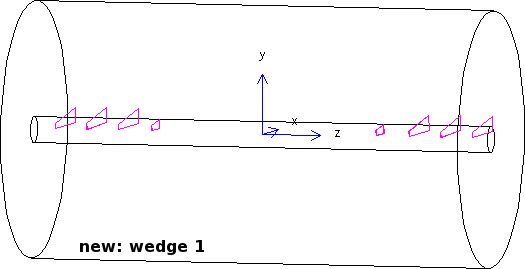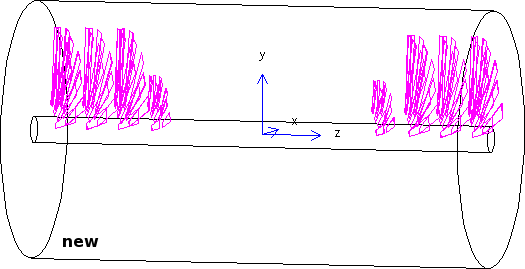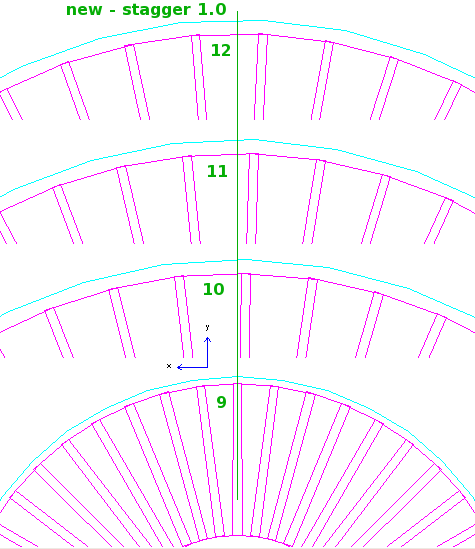do istation=5,12 ! make a rotation matrix for each station
irot = irot + 1 ! such that all face in the same direction,
irsh(istation) = irot ! and phi=0 starts at y=0, and goes positive.
CALL GSROTM( irsh(istation),
& 90., 90. +stag_ang(istation)*abs(stagger),
& 90., 0. +stag_ang(istation)*abs(stagger),
& 180., 0. )
enddo
I had also noticed earlier, that the staggering went in the negative-φ direction.
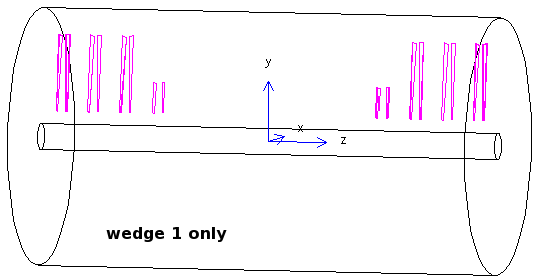
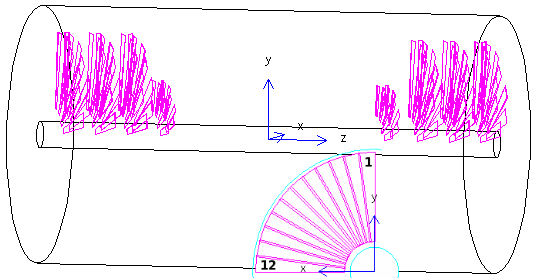
90, 0 + stagger 90, 90 + stagger 0, 0Which is the null rotation, save for the small staggering angles.
You can see that wedge #1 is now along +x, and drawing the first 12 wedges fans them in positive φ
